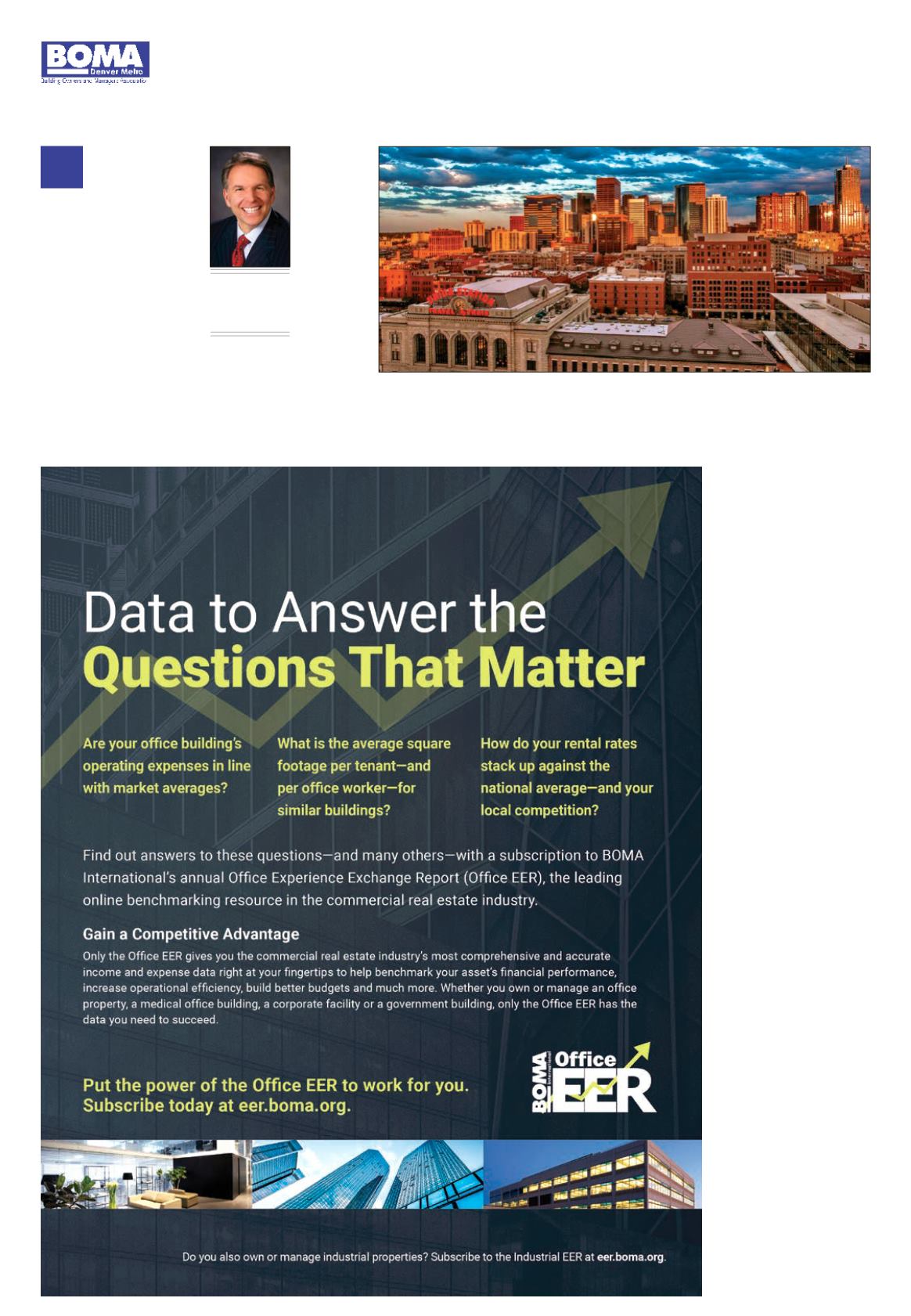
Page 6B —
COLORADO REAL ESTATE JOURNAL
— September 21-October 4, 2016
Spotlight
ords synonymous
with change include
adjustment, advance-
ment, development,
transformation, transition,
variation and shift. These are
all words that describe the
vast turn-around experienced
in downtown Denver since
the city instituted the 1986
Denver Downtown Area Plan.
Denver was very forward
thinking. In 1986, downtown
Denver’s oil and gas compa-
nies accounted for 47 percent
of the office tenancy and most
exited the marketplace over-
night, creating a glut of office
space and a virtual ghost
town for a number of years.
The price of a barrel of oil
at the time was $9 and over
65,000 people moved out of
Colorado that same year.
Today, over 75,000 people
live in downtown Denver
alone.
Millennials
and empty
nesters
continue
flocking to
live in the
core area.
Accordingly,
companies
are following
suit to be in
downtown
Denver,
including
companies
in industries
such as health care, technol-
ogy and financial services. In
spite of the recent pull back
of oil and natural gas prices,
the 750,000 square feet of
sublease space pales in com-
parison to the growth we have
seen from other industries.
“In the past 24 months
alone, 24 companies have
relocated their headquar-
ters or expanded into down-
town Denver,” according
to the Downtown Denver
Partnership’s State of
Downtown Denver 2016
Report. “Since June, we can
add another four companies
to that ever-growing, dynamic
list realizing that downtown
Denver is a critical location to
attract and retain labor now
and into the future.”
Downtown Denver has
become a world-class city
through arduous planning
and luck over the past two
decades. In a 20-year span,
downtown Denver has added
almost 10 million sf of office
space, over 65,000 residents
and 22,000 hotel rooms.
One of the hallmarks of
this exponential growth
is the multibillion-dollar,
voter-approved transit expan-
sion known as FasTracks.
Companies and investors
alike have taken note of the
investment Denver has made
in itself, creating ease with
which people can and will
navigate the entire metro
area. The hub of this mas-
sive transportation system is
downtown Denver. Currently
88 total miles of rail connect
into downtown Denver.
This year alone has
brought transit from Denver
International Airport,
Westminster, Wheat Ridge
and Aurora, all accessing the
center of downtown Denver.
Future service includes lines
to Thornton and extension of
the Southeast, Southwest and
Central rail lines. Employees,
residents and guests can con-
veniently traverse in and out
of downtown Denver. The effi-
ciency and mobility has per-
mitted firms (for the first time
in my 30-plus-year career) to
move from Boulder to Denver.
Additionally, this abundance
of labor provides employees
the ability to live, work and
commute into Denver’s center
city.
In the past decades, firms
resisted relocations into
downtown Denver due to
lack of world-class hotels,
insufficient residential, high
cost of parking and conges-
tion. Parking continues to
be expensive and congestion
could be much worse given
the fact we have the high-
est population and number
of employees ever in down-
town Denver. Yet almost 60
percent of commuters utilize
transit, bicycles, ride share
and walk in their weekly
travel. Downtown Denver has
become recognized as a very
commutable and pedestrian-
friendly place to work, live
and visit.
Increased development
W
Nicholas
Pavlakovich
Vice Chairman,
Cushman &
Wakefield


